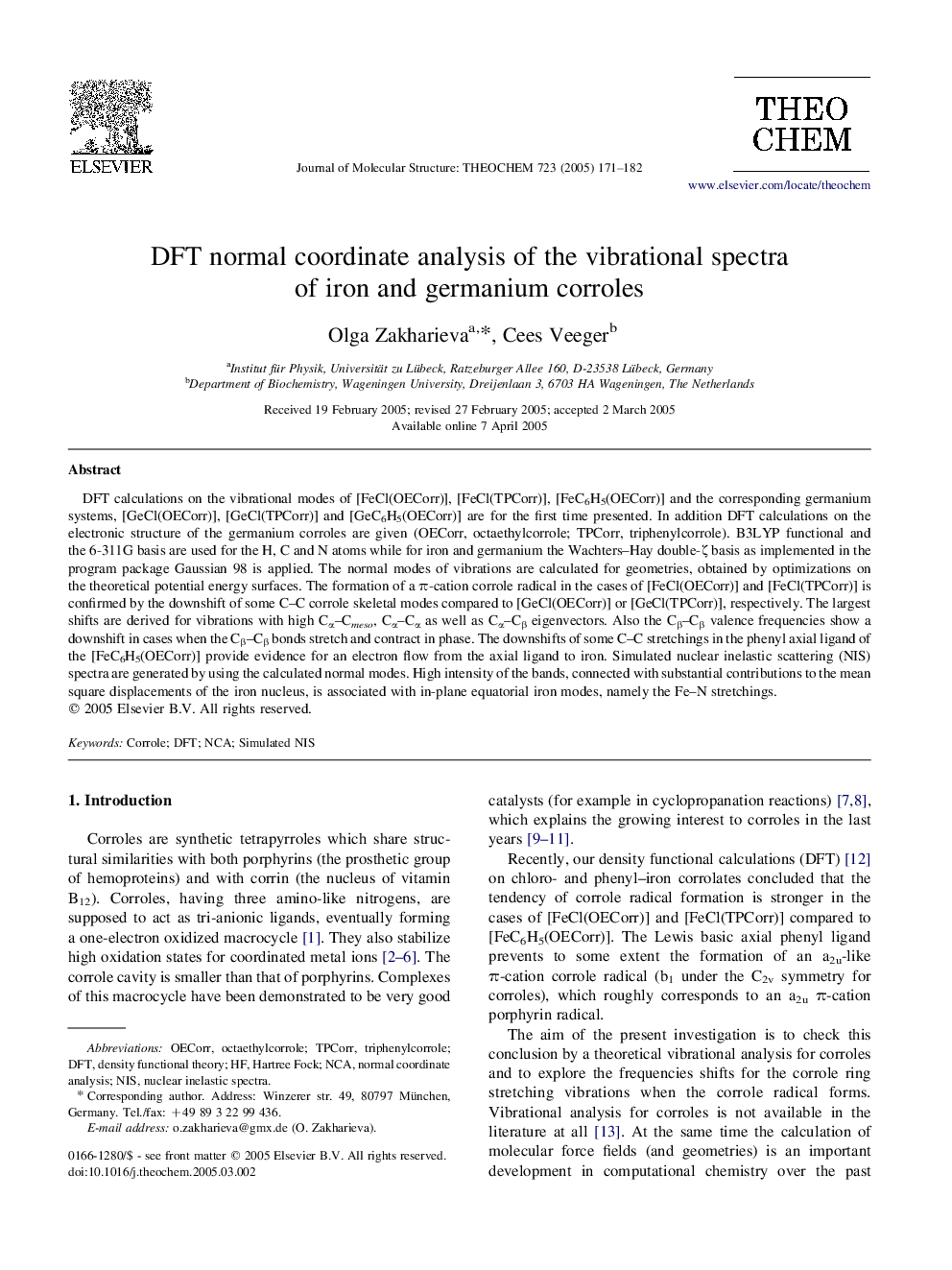| Article ID | Journal | Published Year | Pages | File Type |
|---|---|---|---|---|
| 9591714 | Journal of Molecular Structure: THEOCHEM | 2005 | 12 Pages |
Abstract
DFT calculations on the vibrational modes of [FeCl(OECorr)], [FeCl(TPCorr)], [FeC6H5(OECorr)] and the corresponding germanium systems, [GeCl(OECorr)], [GeCl(TPCorr)] and [GeC6H5(OECorr)] are for the first time presented. In addition DFT calculations on the electronic structure of the germanium corroles are given (OECorr, octaethylcorrole; TPCorr, triphenylcorrole). B3LYP functional and the 6-311G basis are used for the H, C and N atoms while for iron and germanium the Wachters-Hay double-ζ basis as implemented in the program package Gaussian 98 is applied. The normal modes of vibrations are calculated for geometries, obtained by optimizations on the theoretical potential energy surfaces. The formation of a Ï-cation corrole radical in the cases of [FeCl(OECorr)] and [FeCl(TPCorr)] is confirmed by the downshift of some C-C corrole skeletal modes compared to [GeCl(OECorr)] or [GeCl(TPCorr)], respectively. The largest shifts are derived for vibrations with high Cα-Cmeso, Cα-Cα as well as Cα-Cβ eigenvectors. Also the Cβ-Cβ valence frequencies show a downshift in cases when the Cβ-Cβ bonds stretch and contract in phase. The downshifts of some C-C stretchings in the phenyl axial ligand of the [FeC6H5(OECorr)] provide evidence for an electron flow from the axial ligand to iron. Simulated nuclear inelastic scattering (NIS) spectra are generated by using the calculated normal modes. High intensity of the bands, connected with substantial contributions to the mean square displacements of the iron nucleus, is associated with in-plane equatorial iron modes, namely the Fe-N stretchings.
Related Topics
Physical Sciences and Engineering
Chemistry
Physical and Theoretical Chemistry
Authors
Olga Zakharieva, Cees Veeger,
